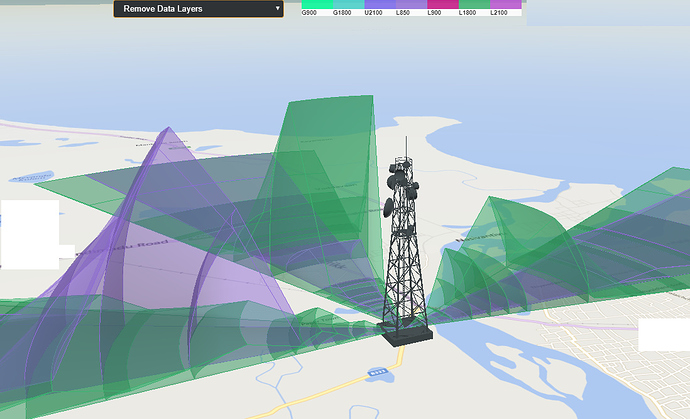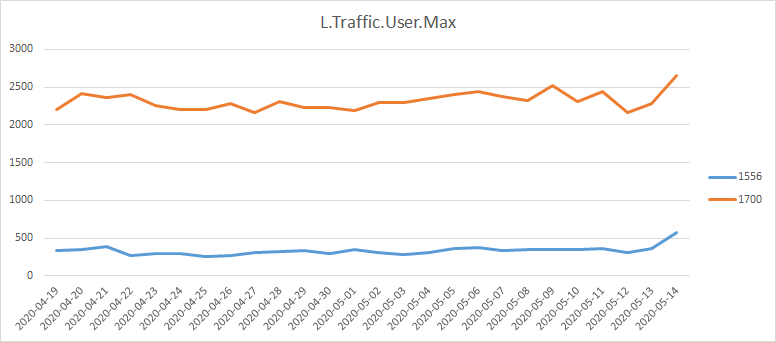Hi folks,
So in my Huawei network, we have two LTE carriers. The first with 20 MHz BW while the the other has 10 MHz. Carrier Aggregation is used as well.
Currently, 20 MHz carrier has more users by approximately 300%.
Ideally, should number of users be balanced between both carriers?
Admin note: this post was updated with image below.
Hi @SimoSamKun.
Usually you should think on balance PRBs between carriers, that will lead to balance the amount of users between carriers.
Regards.
1 Like
Hello @Jairo_Sanz,
Thank you so much for your prompt response.
So as far as I understand, there are 100 PRBs in 20 MHz and 50 PRBs in 10 MHz. hence those are fixed values.
But do you mean that I should work on a scheduling (e.g. activating some feature like MLB in Huawei)? And so should focus more PRB utilization rather than number of users?
Thanks!
Hello @SimoSamKun
It is always good to have balanced carriers. Please try to activate the inter frequency load balancing features like MLB in Huawei to achieve this. This is based on number of user thresholds usually and helps achieve better system performance. Also can you specify the bands for this? which one is capacity and which once is coverage layer.
1 Like
Hi @Mustafa_Rawat
Thank you for your reply.
We’re using band 3 for both carriers. And yes I’m thinking of activating MLB to achieve the balance.
The figure below shows the trend maximum number of users in both carrier per EARFCN:
As a suggestion, don`t worry too much about users. Worry about User Throughput.
Layers with more BW should carry more users, consume more PRBs (absolute numbers), and carry more traffic. In your example, 100PRBs+50PRBs, under the fair division, you should see 2/3 of users and/or traffic on the layer with 20MHz. BUT, your spectral efficiency (a.k.a. CQI) is probably not the same on both, even your coverage may be different (PA Power, pA/pB, etc…)… So you may have 2/3 of users, but not the equivalent amount of traffic or PRB Load.
As long as User Throughput is equalized, you can use a single metric to compare both. As equalized, I mean, equal under a certain margin +/-5% or whatever you define.
That`s my 2c.
1 Like
It is always a good practice to balance the load, otherwise there is a possibility of over loading carriers which are used for coverage purposes while under utilizing the carriers for capacity purposes. It has a direct impact on the Customer experience. See the below example.
3D TP plots --> green - LTE band 3 with 15MHz / Purple - LTE Band 5 with 3 MHz.
1 Like
Thank you for the insights @marcengo. That was really helpful.
This is an excellent illustration of the situation. Could you share the name of simulation tool you use? Thanks!
Hello @SimoSamKun,
This tool has been developed by group of RF engineers including myself. It is an automated tool for RF planning which is hourly gathering TA/TP data of 2G/3G/LTE networks with important KPI’s like PRB utilization/ download capacity/throughput etc and additional data like planned coverage/population density. This tool visualize everything as 3D models to get a better idea about the actual behavior of your network elements . For now, it has been tested for Huawei and ZTE and it works fine in a multi vendor environment as well. At the moment it is not commercially available, but it will be available to purchase soon.
Thank you,
Arith.
2 Likes
Hi, experts!
I’m trying to balance an indoor site, where the number of users on the 2600 (Bw20) and 2100 (Bw20) is always much higher than on the 1800 (Bw10).
The vendor is Ericsson
What parameters could I be changing to make this balance.
Hi, Arith
When the tool is available for purchase


